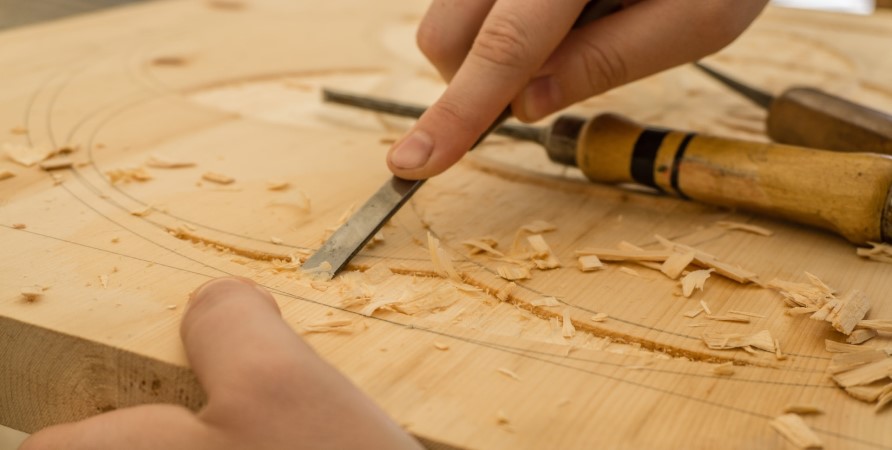
There are many different coverages available to those in the joinery industry. What you require (joiner/builder public liability insurance, employers’ liability insurance, tools cover, etc.) will naturally depend on you and your business.
The foundation of any joinery insurance policy is public liability insurance. It’ll cover you and your business if a customer/member of the public incurs property damage or personal injury as a result of your operation. This might include them slipping over in your showroom or a member of your team damaging their walls while walking through their property. Many clients won’t work with you if you don’t have a policy. AXA estimates the average settlement is around £13,500 (but in some cases, payouts are significantly higher), so it isn’t worth taking the risk of going uninsured.
If you hire any staff in the UK, you’re required to hold employers’ liability insurance. It’ll protect your company in the event a member of your team is injured or becomes unwell and believes your company is at fault for it. You’ll also need to right vehicle insurance as this is a legal requirement, which might mean declaring business use or even getting a commercial vehicle policy if you’re using a vehicle for transporting tools, staff, etc. You can receive fines, penalty points, and even disqualification from driving if you’re caught on the wrong insurance. Talk to your insurer to be sure you have the right cover in place.
Tools and equipment cover can be an excellent choice for anybody who isn’t sure how they’d cover the costs/time lost if a piece of their equipment were to be accidentally damaged, stolen, or missing. It’ll help you pay for the cost of replacing your tools, allowing you to avoid unexpected costs and reducing the negative impact on your clients.
Finally, suppose you design things for other businesses to build themselves or offer your advice and recommendations (materials, products, etc.) as part of your service. In that case, you should consider professional indemnity cover. It’ll protect you if a customer believes your work has been ‘professionally negligent’, such as using an ineffective material while putting something together or giving them a blueprint that was not of sufficient quality.
Types of insurance for carpenters
All of the insurances that apply to a joiner should also apply to a carpenter. Public liability is still considered a must-have by most quality carpenters. Employers’ liability and commercial vehicle cover a legal requirement if you hire staff or use a car/van/motorbike to support your business.
Tools and equipment cover is a great way to make sure you don’t end up with expensive bills if your tools are stolen, damaged, or lost. Professional indemnity is the best way to protect yourself if your advice/expertise makes up part of the overall package you sell to customers, even for things that seem as minor as advising a customer on a quality product you like.
Carpenter tool insurance
While by no means a requirement, many carpenters enjoy the protection a carpenters tool insurance policy can offer them. While it won’t cover any of the things you’d find in a traditional manufacturer’s warranty, it is designed to fill the gaps a warranty may have, such as theft, loss, or accidental damage.
It’s ideal if you have an expensive set of tools that you’re especially reliant on that might prove difficult to replace, whether due to cost constraints or the difficulty of sourcing an alternative. It’ll cover the costs of finding a suitable replacement for your tools (it doesn’t have to be an identical version, as long as they’re fairly similar), so you won’t have to go without for too long
While the potential financial savings if something does go wrong are clear, it’ll also (perhaps as/more importantly) reduce any knock-on impact on your customers. Being able to quickly replace specialist tools without worrying about how you’re going to finance them can help you get back to work as quickly as possible, allowing you still to meet the agreed completion dates with your clients.
Carpenter and joiner public liability insurance
Carpenter and joiner public liability insurance are designed to protect those in the woodworking industry from any damages or injury they might cause to third parties. This would include groups such as customers, the general public, and other businesses you share a worksite with.
It isn’t technically a legal requirement, but it might as well be. All quality carpenters and joiners will have one, and if you’re going on-site or working on a big project, don’t be surprised if clients insist that you hold a policy before they engage you.
The costs of something going wrong can be severe, and considering you can get £2M worth of carpenters/joiners public liability cover from £75-£100, it isn’t worth taking the risk. If you’re still unsure, ask some of your fellow carpenters and joiners how they insure themselves, and you’ll realise how important it is to be effectively insured.
Where to find public liability insurance for a self-employed carpenter
Finding public liability as a self-employed carpenter shouldn’t be any more taxing than finding other popular insurances, such as a vehicle or home cover. A quick Google search should offer you an idea of the avenues you can take to get a policy sorted – and you’ve got 3 options.
Comparison websites are great for anyone looking to get a good idea of price and find the cheapest option on the market. Simply Business, QuoteZone, and NimbleFins all offer insurance for carpenters and joiners. They might connect you with brokers, insurers, or both. Brokers are market experts who can help you find a good deal and guide you through the insurance buying process, ideal for anyone who isn’t 100% sure what they want/need. And finally, if you know what you want and who you want it from, go straight to them and buy directly from an insurer. Most will have online forms to fill out or phone lines to call to get you quickly and painlessly signed up.







